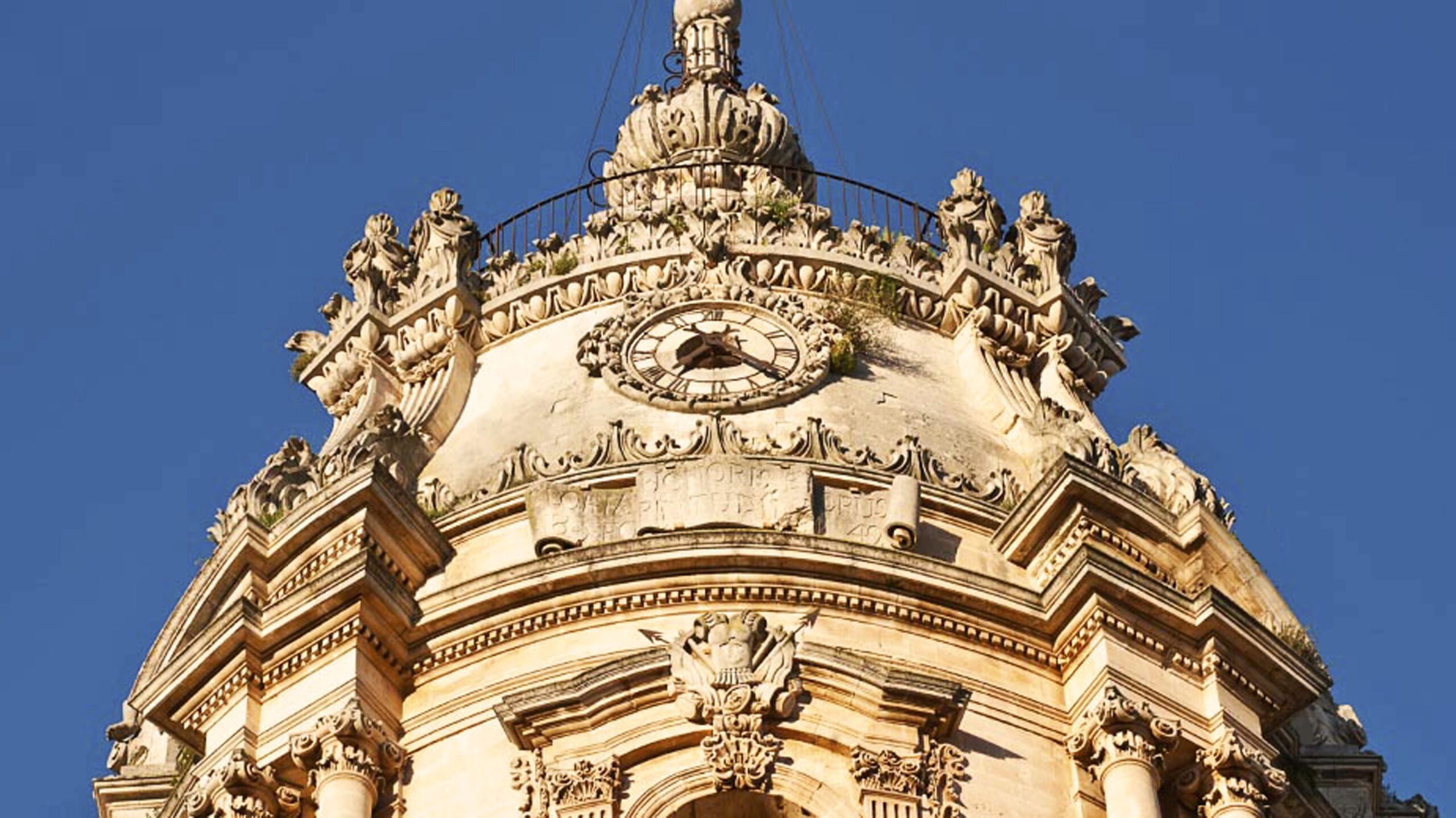Modica
Following the traveler’s stay in Catania, it was then on to the enchanting town of Modica, located near the southern coast of Sicily.
The southeastern part of Sicily is enchanting, romantic and astounding in its architectural details, so much so that in 2002, eight of its towns were included as UNESCO World Heritage Sites. Located in the Province of Ragusa, one of these gems is the town of Modica. Following a devastating earthquake in 1693, the rebuilding of the town took place in the prevailing style of the day – Baroque.
To the uninitiated, Modica might seem like an undiscovered jewel in southern Sicily. The ‘City of 100 Bells and 100 Churches’ was once the capital of this portion of Sicily in the middle ages and it is a wondrous destination that charms visitors with its architecture, food, culture and sense of authenticity. Lying on a gorge formed by four hills in the south of the Iblei Mountains, the town is divided into Modica Alta (Upper Modica), whose amber colored buildings clamber up on the rocks and Modica Bassa (Lower Modica), at the bottom of the valley. A maze of narrow streets and steps joins the two sections together.
Palazzi and houses rise from the bottom of the gorge seemingly stacked one on top of the other. Magnificent churches, with the inspiring domes, bell towers and intricate facades, punctuate the red-tiled roofs. One is immediately struck by the beauty that permeates the entire town. Terraces climb up the gorges interspersed with Baroque churches and Rococo palaces in an area that is rich in history and some of the most beautiful architecture in Sicily. Modica was once considered the Venice of the South for the many bridges that crossed over the Ianni Mauro and the Pozzo dei Pruni Rivers. At the beginning of the last century, following a terrible flood in 1902, the rivers were covered over and today Corso Umberto, the town’s main thoroughfare and historic center, stands in their place.
Modica has a remarkable number of impressive churches, including two grand Baroque cathedrals. Up a flight of steps from Corso Umberto, the Duomo di San Pietro was originally built in the 14th century, but was destroyed by earthquakes in 1613 and again in 1693, before being rebuilt in the Baroque-style during the 18th century. The church’s steps are ornamented with large statues of apostles and saints.
Higher up the slopes towards the old town perches the Duomo di San Giorgio, Modica Alta’s cathedral and the town’s most remarkable building. Known as one of the Seven Wonders of the Baroque World, this golden 18th century church looms over the town where visitors need to ascend 250 steps to the church which has a beautiful façade that rises through three levels to a single bell-tower. The church interior is decorated with gilding and pastel blue stucco. It is enriched by paintings such as the “Events of the Gospel” and the “Life of Saint George” by Girolamo Aliprandi and interesting sights including a statue of San Giorgio and a rich silver altarpiece. If you carefully look, you will see a solar meridian line across the transept, with a small hole (gnomon) high up in the ceiling to let in the ray of sunlight. On the left of the church is the elegant Baroque Palazzo Polara.
Climbing upwards to the left of the church you can explore the steep maze of village dwellings. At the top is the Belvedere Pizzo, a good viewpoint with benches and views over the Modica valleys. Along the street is another imposing church, the 19th century Chiesa di San Giovanni, which also features a grand staircase and extravagant façade.
It is impossible to miss the town’s stately clock tower, which stands on a high peak, adjoining a beautiful stone structure overlooking the ancient city. The clock’s mechanical workings are original and date to 1725. In this age of modern technology, the clock is lovingly cared for and must be wound by hand, but it is one of the emblems of Modica. Like the structures that surround it in the historic center, its architectural elements are a symphony of shapes and decoration, one that can be admired from a distance, but can best be appreciated up close. Corso Regina Margherita is a sloping street leading down from the heart of the upper town, lined with lovely old palazzos. This old town feels significantly less cosmopolitan and modern than the lower town, with old-fashioned shops.
In addition to its structural beauty, the city is renowned for its rich culinary tradition, offering an amazing variety of seasonal dishes. One of the most famous products of the city is the Cioccolato Modicano or Modican chocolate. The original chocolate making technique, dating back to the 16th century, does not use cocoa butter or additives. The traditional flavors are vanilla and cinnamon but today you can find all sorts of flavors, including white pepper, citrus and sea salt and more. The city is also known for a tomato and cheese pie called scaccia. As stated, scaccia consists of tomatoes and cheese which are placed on dough and then folded to form a kind of pie.
Modica remains a gem of Sicily with its Baroque style and beautiful architecture. Coupled with its delicious chocolate treats and culinary tradition, Modica is a must-see site when visiting the southeast coast of Sicily.





